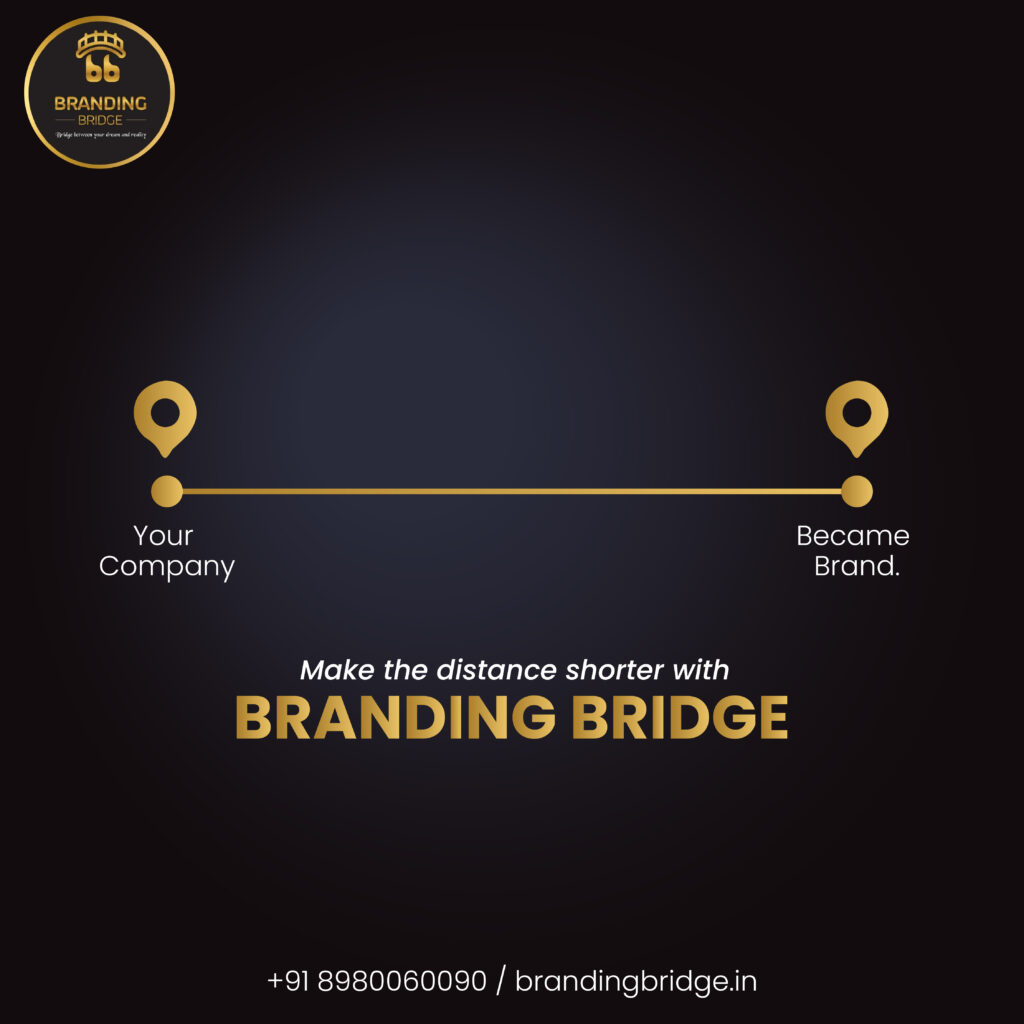At Branding Bridge, we bring your business into the spotlight by leveraging the full power of digital marketing. Our mission is to brighten your business’s online presence, ensuring that you not only attract customers but also convert them into loyal advocates for your brand. Our Digital Marketing Services 1. Search Engine Optimization (SEO) Enhance Your Visibility: SEO is essential for driving organic traffic. We optimize your website to rank higher on search engines, helping potential customers easily find your business. Our focus on keyword research, on-page SEO, and backlink strategies ensures that your business stands out in search results. 2. Social Media Marketing Build a Connected Community: We create engaging social media campaigns across platforms like Instagram, Facebook, LinkedIn, and Twitter. Whether you want to grow your followers, increase brand awareness, or boost sales, our targeted social media strategies reach the right audience and foster meaningful engagement. 3. Pay-Per-Click Advertising (PPC) Drive Immediate Results: Our data-driven PPC campaigns put your business in front of potential customers quickly. With strategic ad placements on Google, Bing, and social media platforms, we ensure your ads convert clicks into leads and sales, optimizing for a high return on investment. 4. Content Marketing Tell Your Story: Effective content marketing creates a lasting connection with your audience. We craft informative, engaging, and value-driven content that establishes your business as a trusted authority in your industry. From blogs and articles to videos and infographics, we ensure your message resonates with your target market. 5. Email Marketing Build Relationships, Drive Conversions: Email marketing remains one of the most powerful tools for nurturing leads. We create personalized email campaigns that keep your audience informed, engaged, and returning to your business. From newsletters to promotional emails, we help you strengthen customer loyalty. Why Choose Branding Bridge for Digital Marketing? Customized Solutions We don’t believe in a one-size-fits-all approach. Our team analyzes your business, target audience, and competitors to develop a tailored digital marketing strategy that meets your unique goals. Proven Track Record With years of experience in digital marketing, we have a history of delivering measurable results. Our strategies focus on driving traffic, increasing engagement, and generating leads that convert into sales. Data-Driven Approach Every campaign we create is backed by data. We continuously analyze performance metrics and refine our strategies to ensure your marketing efforts are optimized for success. Comprehensive Support Whether it’s managing your digital ads, handling your social media accounts, or building a content strategy, we offer full-service digital marketing solutions. You can focus on your business while we handle the online growth. The Benefits of Digital Marketing Increased Visibility: Be where your customers are – online. Digital marketing ensures that your business is seen by the right people at the right time. Cost-Effective: Compared to traditional marketing, digital marketing provides a better return on investment by allowing you to target specific audiences with measurable results. Engagement and Interaction: Digital marketing offers a direct line of communication between your brand and its customers, building trust and brand loyalty over time. Real-Time Analytics: Track your campaign’s performance in real-time and make informed decisions to continuously improve and refine your strategy. Let’s Bright Your Business with Digital Marketing At Branding Bridge, we bring your business into the spotlight by leveraging the full power of digital marketing. Our mission is to brighten your business’s online presence, ensuring that you not only attract customers but also convert them into loyal advocates for your brand. Our Digital Marketing Services 1. Search Engine Optimization (SEO) Enhance Your Visibility: SEO is essential for driving organic traffic. We optimize your website to rank higher on search engines, helping potential customers easily find your business. Our focus on keyword research, on-page SEO, and backlink strategies ensures that your business stands out in search results. 2. How useful was this post? Click on a star to rate it! Submit Rating Average rating 5 / 5. Vote count: 1 No votes so far! Be the first to rate this post. We are sorry that this post was not useful for you! Let us improve this post! Tell us how we can improve this post? Submit Feedback

Table of Contents
Toggle1. Know Your Target Audience
- Why it Matters: Understanding who you’re speaking to is the cornerstone of a successful brand. Your audience’s needs, desires, and pain points should drive every decision you make.
- Action Step: Conduct thorough research to identify the demographics, interests, and behaviors of your ideal customer. This will help you craft a brand identity that resonates with them and meets their specific needs.
- Example: A tech startup targeting millennials should use modern, sleek design and language that speaks to innovation and convenience. Meanwhile, a luxury brand would focus on elegance and exclusivity to appeal to a high-end audience.
2. Be Clear on Your Brand’s Purpose
- Why it Matters: Without a clear brand purpose, it’s easy for your messaging to become scattered and lose impact. Your brand purpose is the “why” behind your business—it’s what motivates you to do what you do and why customers should care.
- Action Step: Define a mission statement that clearly outlines what your business stands for and what problems you solve for your audience. This will guide your brand’s voice, tone, and messaging.
- Example: A business that focuses on sustainability may have a purpose centered around creating eco-friendly products that contribute to a greener planet. This clear purpose will inform every decision, from product design to marketing campaigns.
3. Craft a Unique Value Proposition
- Why it Matters: Your value proposition explains what makes your brand different from competitors. In a crowded marketplace, having a distinct value proposition helps you stand out and gives customers a reason to choose you over others.
- Action Step: Identify your unique selling points (USPs)—the specific benefits that only your brand offers. Ensure that this value is communicated clearly across all platforms, from your website to your social media profiles.
- Example: A local coffee shop may stand out by emphasizing its ethically sourced beans, friendly service, or community focus—things that differentiate it from chain coffee brands.
4. Establish Consistent Brand Messaging and Identity
- Why it Matters: Consistency is key in branding. If your visual identity or messaging varies across platforms, it confuses your audience and weakens your brand’s impact. A cohesive brand ensures that every interaction with your business feels familiar and trustworthy.
- Action Step: Develop brand guidelines that include your logo, color palette, typography, and tone of voice. Make sure everyone on your team is aligned with these guidelines to ensure consistency across all channels.
- Example: A fitness brand that uses motivational language and bold visuals should carry this style from their website to social media, ads, and even packaging, ensuring that the audience can easily recognize the brand wherever they encounter it.


Conclusion: Build a Strong Brand Foundation with Branding Bridge
Branding is one of the most powerful tools to differentiate your business, but it requires careful planning. Before diving into your brand-building journey, make sure you have a clear understanding of your audience, purpose, value, and identity. At Branding Bridge, we help businesses build brands that are not only visually appealing but strategically sound.
If you’re ready to create a brand that stands the test of time, contact us today! We’ll help you ensure that these 4 elements are in place, so your brand launches with confidence and clarity.
How useful was this post?
Click on a star to rate it!
Average rating 5 / 5. Vote count: 1
No votes so far! Be the first to rate this post.
We are sorry that this post was not useful for you!
Let us improve this post!
Tell us how we can improve this post?


